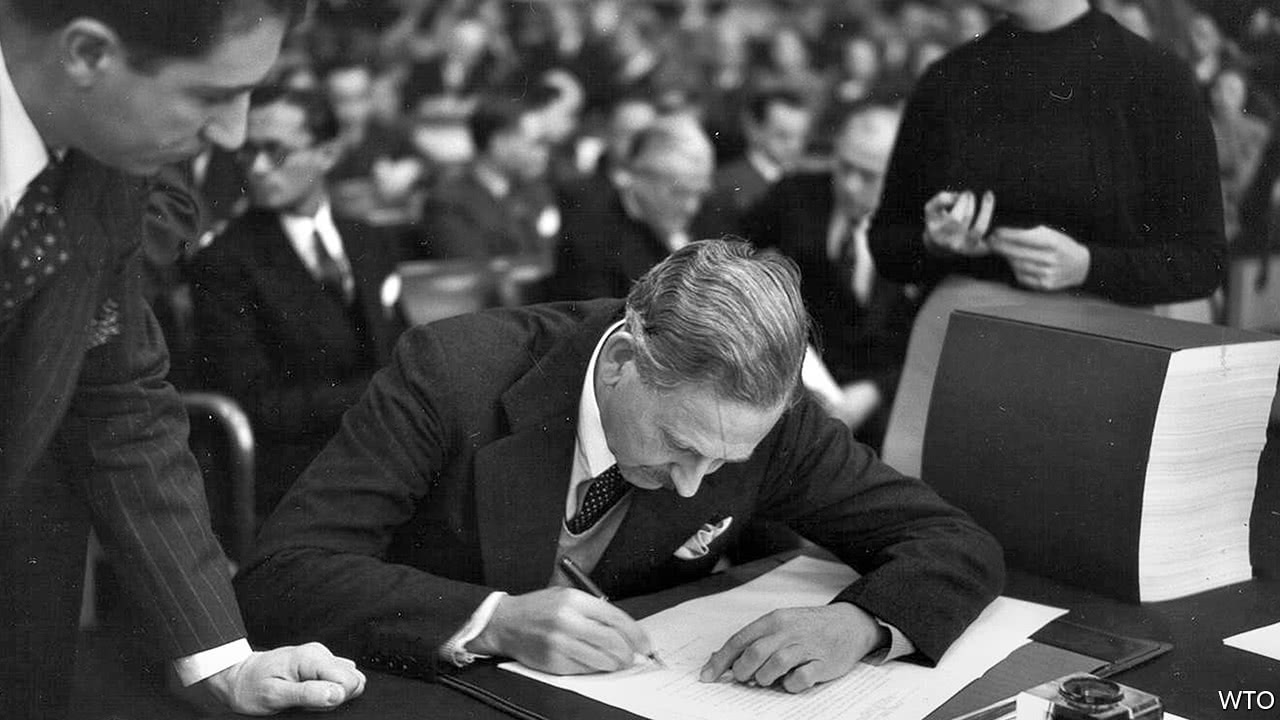
SUPERLATIVES surrounded the General Agreement on Tariffs and Trade (GATT) when it was signed on October 30th 1947. A press release heralded it as “the most far-reaching negotiation[s] ever undertaken in the history of world trade.” The Economist grumbled it was “one of the longest and most complicated public documents ever issued—and one of the hardest to comprehend.” The Daily Express, a British newspaper, growled: “The big bad bargain is sealed.”
The agreement’s complexity matched the tangle of global trade affairs. In the preceding decades a thicket of protectionism had strangled commerce and slowed recovery from the Depression of the 1930s. The GATT’s length matched its scope. It included both tariff cuts and promises to forswear new duties. Covering 23 countries responsible for 70% of world trade, it came to embody the rules-based multilateral system.
-
The making of the “Psycho” shower scene
-
Donald Trump dominates Virginia’s tight governor race
-
Interest rates rise in Britain for the first time in a decade
-
Retail sales, producer prices, wages and exchange rates
-
Foreign reserves
-
Why QR codes are on the rise
After 48 years as a provisional arrangement, the GATT has since 1995 been the World Trade Organisation (WTO). But, 70 years on, some of the GATT’s original challenges still loom large. The first is the trade-off between ambition and practicality. In 1947 American negotiators had a grand vision for a bigger International Trade Organisation, with more members and more areas of regulation. Eventually that plan collapsed under the weight of its own ambition. Today, given the challenge of getting consensus among 164 signatories, WTO members are increasingly turning to narrower, plurilateral agreements.
A second trade-off is between control and co-operation. Today British Brexiteers want to “take back control” and President Donald Trump thinks past deals have not put America first. While the GATT was brewing, John Maynard Keynes, an influential economist, doubted that Britain should spurn the option of using tariffs to control the level of employment—though he did accept that the benefits of everyone forgoing tariffs could outweigh the costs.
Some trials are new. Today, as the WTO gears up for its 11th ministerial conference, American leadership is absent. Instead, the Trump administration is obsessed with promoting exports. Will Clayton, an American negotiator in 1947, was similarly preoccupied with getting a good deal for American producers. He proposed walking away from talks with the British after they refused to give up lower tariffs for their dominions and colonies. But his political masters stopped him, and compromised. They saw the wider benefits of the GATT, including its effect on European reconstruction and America’s geopolitical alliances. They could see that trade deals are about much more than tariff lines.
Source: economist
October 30th marked the 70th birthday of the WTO’s precursor